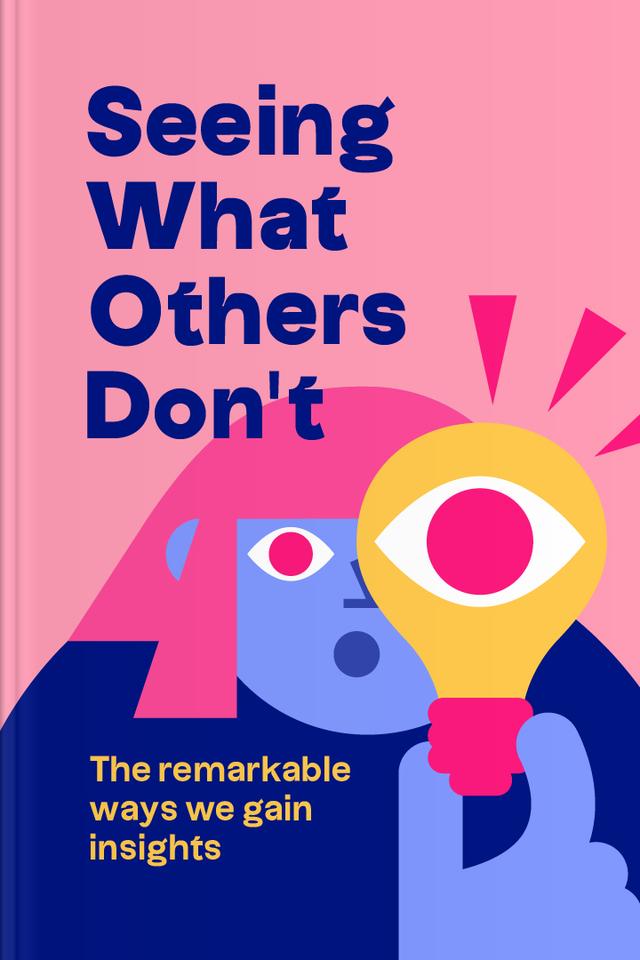You’ll learn
- Why curiosity is a gateway to insights
- How careful observation births new ideas
- The power of inattentiveness in connecting dots
- How resisting the birth of insights can hinder creativity
russia has launched a full-scale war in Ukraine. Donate to support Ukraine and protect the world’s peace.

first KEY POINT
At least once in life, everyone has a striking moment of understanding something that wasn't clear before. Maybe, during a math class, you suddenly realized how to solve an equation or cracked a riddle after hours of thinking. These revelations are called insights, and they are crucial for our personal and society's breakthroughs. Insights can be quick and sudden as well as slow and are gained through trial and error. The latter happened with Michael Gottlieb, an American M.D., who identified AIDS (Acquired Immune Deficiency Syndrome) as an upcoming epidemic.His path to insight started in 1981 with a pneumonia patient whose immunity wouldn't respond appropriately to the disease. Our body produces helper and suppressor cells to regulate the course of illnesses — the former switches on the production of antibodies, which are the main fighters against microbes. Suppressor cells control these fighters so that they don't attack “good” microbes. As a rule, we have more helper cells in our blood when we are ill. So, when Gottlieb noticed that his patient's had more suppressor cells, he was shocked. On top of that, the patient's body acted against the helper cells, never letting him get better.Dr. Gottlieb noted that this patient had a same-sex orientation, and later, he discovered that five other patients who developed pneumonia also were same-sex oriented. Seeing this as more than mere coincidence, he and his colleagues sounded the alarm about the dangerous disease. His ability to recognize a pattern made humanity aware of the risks surrounding people in the past and now.But not only can scientists and geniuses gain insights — all people can. Our brains are built this way — we enjoy the moments when resolution enters our minds. In the philosophical book The Art of Thought, English psychologist Graham Wallas described the stages of how insight is born:1. Preparation — A person researches something through analysis.2. Incubation — A person ceases conscious attempts to consider the problem and their unconscious takes control.3. Illumination — An insight breaks into the conscious mind.4. Verification — An individual checks whether the insight really works.
This summary will ensure your understanding of insight’s emergence stages, which is important for getting more of them throughout life. The author explains how to become an insight generator and alter one’s mind. You will be able to increase the flow of new ideas and change your personality and the world around you.
second KEY POINT
Coincidences are the first signs of recognizing a new pattern, so paying attention to them is wise. Luckily for the astronomical community, Jocelyn Bell Burnell, an Irish astrophysicist, paid attention to coincidences, which allowed her to discover a new type of star. With the help of a radio telescope, she aimed to find quasars, luminous objects that emit energy. Within the data, she detected specific curves that seemed odd, so she put question marks near them. She started to notice them more often and recognized the indications of quasars during her month-long research.The first thing Burnell understood was that the curves represented periodic pulses. She even thought her equipment had broken down, but technicians confirmed everything worked well. She started investigating different parts of the sky, finding the same pulse pattern repeatedly. As it turned out, she had discovered fast-revolving pulsars, or neutron stars.

Continue reading with Headway app
Continue readingfirst KEY POINT
second KEY POINT
third KEY POINT
fourth KEY POINT
fifth KEY POINT